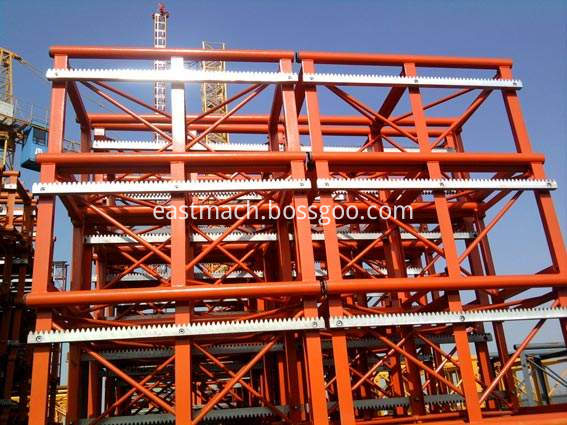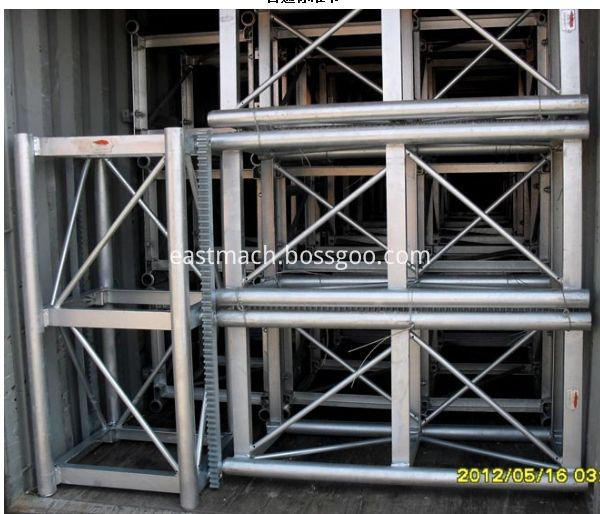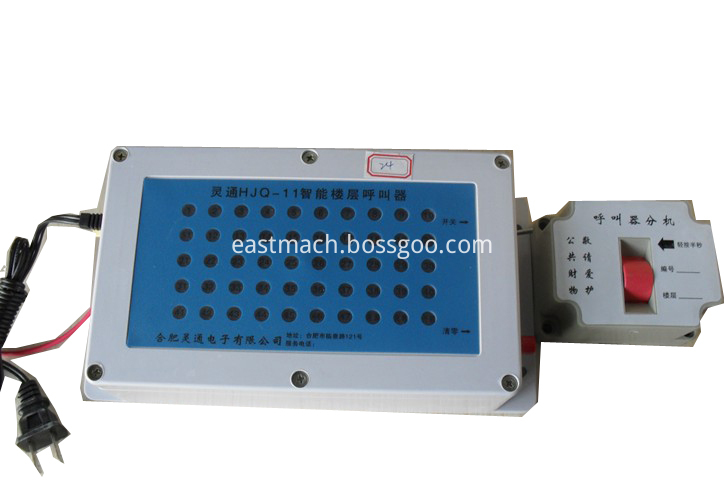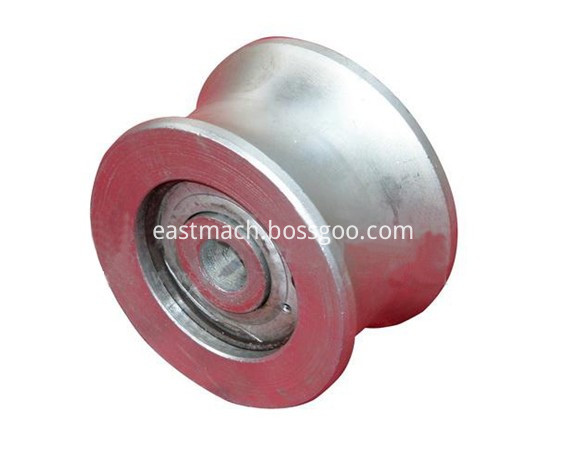The minerals of tungsten can be divided into two major categories: scheelite and wolframite . In general, scheelite is much easier to float than black tungsten.
A scheelite flotation
(1) Flotation method of scheelite. The molecular formula of scheelite is CaWO 4 , and since the molecular formula contains calcium, chemical adsorption and chemical reaction are prone to fatty acids. Commonly used collectors are vegetable oil oleic acid and 731 oxidized paraffin soap. The vegetable oil oleic acid has a good selectivity and collection property. 731 oxidized paraffin soap has better selectivity but poorer harvesting power.
Scheelite since the normally various calcium and magnesium phosphates, sulfates, carbonates, fluorides symbiotic their floatability similar, often difficult to select qualified concentrate. To enhance the selectivity of the process, the following methods can be used:
1) with sodium sulfide, cyanides, chromates and the like which inhibit the associated sulfide minerals (mineral sulfide is large, must be separately flotation); water glass, tannins, poly-sodium, chromate inhibit gangue Mineral: The pH of the pulp is adjusted to 9.5~10 with water glass or sodium carbonate, and it can be 11~12 when selected.
2) "Lime - flotation" method. The main points are: pulp with lime (about 0.5kg / t), then add sodium carbonate (about 0.15kg / t) and water glass (about 2.2kg / t), and finally with oleic acid and naphthenic acid (both The ratio is 1:1). The method is characterized in that Ca 2+ in the slurry is first adsorbed on the surface of the gangue mineral. When sodium carbonate is added, the Ca 2+ adsorbed on the surface of the gangue becomes a relatively easily inhibited CaCO 3 film. Therefore, the concentrate grade can be greatly improved.
3) A large number of water glass heating selection methods (ie Petrov method) are used. The low-grade coarse concentrate is added to 40~90kg/t water glass, heated to 60~90°C for a period of time, stirred, dehydrated (substantially removing the excess agent from the surface of the gangue), then pulping, and then Select 4 to 8 times to get a higher grade concentrate. If the concentrate contains more barite , the barium sulfate or sulfonate can be used to reverse float floc at a pH equal to 1.5~3. When the concentrate contains phosphorus, it can be leached with hydrochloric acid. Select the concentrate to dissolve the phosphate minerals. After solid-liquid separation and washing, the phosphorus content in the scheelite concentrate can be qualified.
In scheelite deposits, there are often some symbiotic minerals (such as tin , molybdenum, etc.). These symbiotic minerals will enter the scheelite concentrate during the re-election process, affecting the quality of the concentrate. Therefore, during the flotation of scheelite There is also the problem of separation of tungsten tin and tungsten and molybdenum. The separation of scheelite and cassiterite can be either electrified or floated. When the flotation is separated, the scheelite is captured by the fatty acid, and the cassiterite is suppressed by the water glass. When the scheelite contains aluminum , since molybdenum has good floatability, the molybdenum ore can be floated first, and then the scheelite is floated.
(2) Examples of scheelite flotation. Kim main ore minerals are natural Tungsten metal gold, stibnite, scheelite, iron ore containing gold, followed by pyrite, wolframite, sphalerite like. The main gangue minerals are quartz , followed by calcite , apatite, and pyrophyllite . The scheelite is generally produced in coarse veins and irregular blocks in quartz veins, and sometimes in thin layers and flakes in stibnite, and a small amount is produced in thin lines in surrounding rock.
The plant uses a heavy-floating combined process to reproduce and float the sulphur concentrate. The quality of the smectite concentrate produced by re-election is relatively high, close to the special grade, and the quality of the scheelite concentrate obtained by flotation is slightly lower, and it is often mixed with the re-elected product. The ore supply for flotation operations is re-election (shaker) tailings. The principle of flotation principle is shown in Figure 1.
Figure 1 scheelite flotation process [next]
The ore mine is ground in two stages. The first section was coarsely ground to less than 0.8 mm, and coarse grains of white tungsten, rhodium and gold were selected by a shaker. Shaker and then finely ground to tailings 80 -0.074mm%, plus xanthate, black powder, lead nitrate and copper sulfate for flotation of gold, antimony, antimony, gold tailings after the float then scheelite flotation, and oleic acid As a collector, sodium carbonate adjusts the pH of the slurry to about 9, and water glass acts as an inhibitor of silicate. The scheelite is roughly selected to give a coarse concentrate containing about 5% of WO 3 . Because there are a large number of calcium-containing minerals such as calcite and apatite that also come up together, it is necessary to select scheelite. The selection uses the "dense slurry heating" method, that is, the white tungsten coarse concentrate is first concentrated to 50% solids, and a large amount of water glass (90 kg / t coarse concentrate) is added, and the steam is heated to about 90 ° C, and the mixture is stirred. Hours, then dilute the slurry to 20%, keep the pulp temperature between 26~30 °C, and select it at pH 9~10. At this time, calcium-containing minerals such as calcite are suppressed, and the apatite is still floating together with the scheelite, so the end of the process has the operation of acid leaching and phosphorus removal. The concentrate obtained by flotation contains WO 3 50%~55%, and after acid leaching, it contains WO 3 65%~70%, and the recovery rate is more than 85%.
B Flotation of black tungsten ore
Common black tungsten minerals are tungsten manganese iron ore (Fe, Mn) WO 4 , tungsten iron ore (FeWO 4 ) and tungsten manganese ore (MnWO 4 ). They are isomorphic minerals. The order of floatability of these three minerals is:
Tungsten manganese ore>tungsten manganese ore>tungsten iron ore
Commonly used collectors for flotation wolframite are oleic acid, succinamide, benzoic acid and phosphonic acid. Salicylic acid is also a promising collector for floating black tungsten. Oleic acid has a strong catching power, but its selectivity is poor.
The pH of the wolframite ore is similar to that of scheelite, and sodium carbonate is used as a regulator. Flotation of wolframite with benzoic acid or phosphonic acid is carried out in an acidic medium, and the regulator is sulfuric acid or hydrochloric acid. Lead nitrate is commonly used as an activator.
The gangue inhibitors of flotation wolframite are: sodium fluorosilicate, water glass, a mixture of water glass and aluminum sulfate (6:1), dichromate, sulfuric acid and hydrofluoric acid. However, the wolframite itself can be inhibited by a large amount of oxalic acid, sodium fluorosilicate (4 kg/t or more) and water glass, so the amount of the inhibitor must be strictly controlled.
A tungsten ore beneficiation plant process selection of fine mud, which feed size of 36% less than 0.074mm, metallic minerals are wolframite, pyrite, limonite, sphalerite, bismuthinite like. The grade of tungsten is 8% to 10%, and the gangue is garnet and quartz. Flotation with a mixture of benzoic acid and oxidized paraffin soap, after a rough two sweeps, the indicators are as follows:
Raw ore grade | WO 3 | 6%~8% |
Concentrate grade | WO 3 | 40%~47% |
Recovery rate | | 78%~82% |
Construction Hoist Parts:
Construction Hoist Parts is mainly includs mast section, motor, reduction gear, anti - fall safety device, cable, high - strength bolts and roller.
The progressive anti-falling safety device and the motor adopts reliable automatic compensation disc brake to ensure the operation safety.
The general length of each mast section is 1508mm, the rack is fixed on the mast by three bolts and it can be exchanged. For the single cage hoist there is only one rack on the mast section, and the mast section can be used for the double cages hoist by increasing one rack.
The section of the mast is diverse, select one type section according to different hoist. The mast sections are bolted together with M24 bolts and nuts to form mast. The mast is tied to the building with tie-in and is the guide rail of the cage.
According to the user's or circumstance's request, surface of mast is hot dip galvanized, which can prevent it rusting.
Type of Construction Hoist Parts:




If you have any questions, please contact with us directly. Construction Hoist Parts are produced with High Quality and Good Appearance. Welcome you can visit our Factory. For inqury, Please send mail directly to us.Construction Hoist Parts
Construction Elevator Parts,Construction Aerial Work Platform,Construction Hoist Spare Parts,Construction Hoist Elevator Parts
Jinan East Machinery Co.,Ltd. , https://www.jneastmach.com




